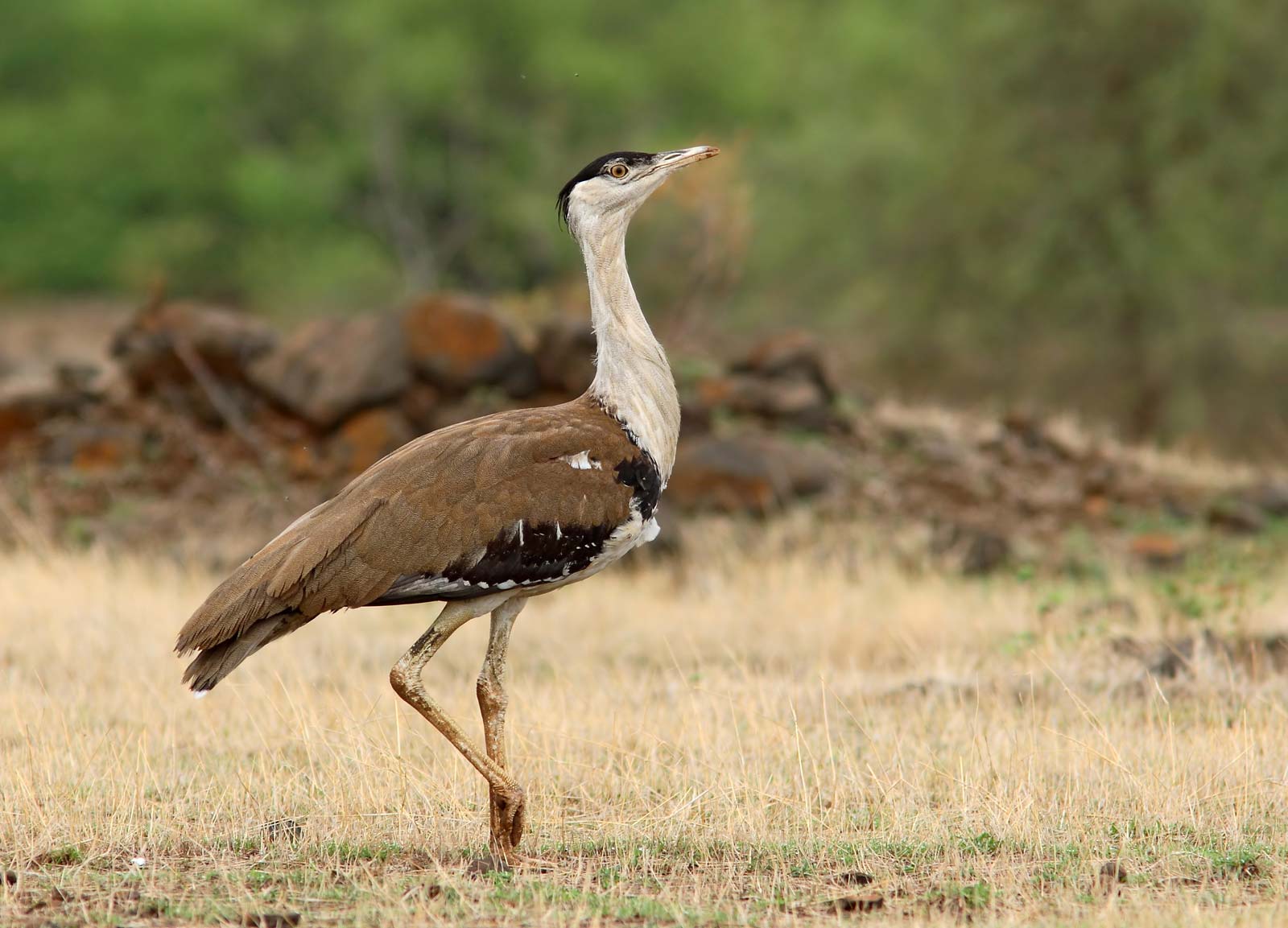Biodiversity & Environment
Firefly for Great Indian Bustard
- 24 Dec 2020
- 4 min read
Why in News
The Ministry of Environment Forest and Climate Change (MoEFCC) along with the Wildlife Conservation Society (WCS) India has come up with a unique initiative a “firefly bird diverter” for overhead power lines in areas where Great Indian Bustard (GIB) populations are found in the wild.
- The Wildlife Conservation Society is a non-governmental organization headquartered in New York, that aims to conserve the world's largest wild places in 14 priority regions.
Key Points
- About:
- Firefly bird diverters are flaps installed on power lines. They work as reflectors for bird species like the GIB. Birds can spot them from a distance of about 50 meters and change their path of flight to avoid collision with power lines.
- Smaller birds can change their direction but for larger bird species, it is difficult because of their body weight and other factors.
- Since great Indian bustards are heavy birds with limited frontal vision, they find it difficult to change their course of flight swiftly even if they spot a live wire.
- The diverters are called fireflies because they look like fireflies from a distance, shining on power lines in the night.
- Firefly bird diverters are flaps installed on power lines. They work as reflectors for bird species like the GIB. Birds can spot them from a distance of about 50 meters and change their path of flight to avoid collision with power lines.
- Background:
- According to a report by the MoEFCC, power lines (especially high-voltage transmission lines) with multiple overhead wires, are the most important current threat for GIBs in the Thar region, and are causing unsustainably high mortality.
- The Supreme Court of India, in a recent hearing, directed that power lines in GIB landscapes should be placed underground.
Great Indian Bustard (GIB)
- About:
- It is one of the heaviest flying birds in the world.
- Scientific Name: Ardeotis nigriceps
- Habitat:
- Bustards generally favour flat open landscapes with minimal visual obstruction and disturbance, therefore adapt well in grasslands.
- Its population is confined mostly to Rajasthan and Gujarat. Small populations occur in Maharashtra, Karnataka and Andhra Pradesh.
- Protection Status:
- International Union for Conservation of Nature status: Critically Endangered
- Convention on International Trade in Endangered Species of Wild Fauna and Flora (CITES): Appendix1
- Wildlife (Protection) Act, 1972: Schedule 1
- It is one of the species for the recovery programme under the Integrated Development of Wildlife Habitats of the Ministry of Environment, Forests and Climate change.
- The Great Indian Bustard, Asian Elephant and Bengal Florican have been included in Appendix I of the UN Convention on Migratory Species at the 13th Conference of the Parties (COP) to the Convention on Migratory Species (CMS) in Gandhinagar (Gujarat).
- Threats:
- Collision/electrocution with power transmission lines,
- Hunting (still prevalent in Pakistan),
- Irrigation and farming technology
- Mining
- Wind turbines and Solar farms (photovoltaic power stations)
- Plantation of exotic shrub/tree species in deserts and grasslands in the name of afforestation






